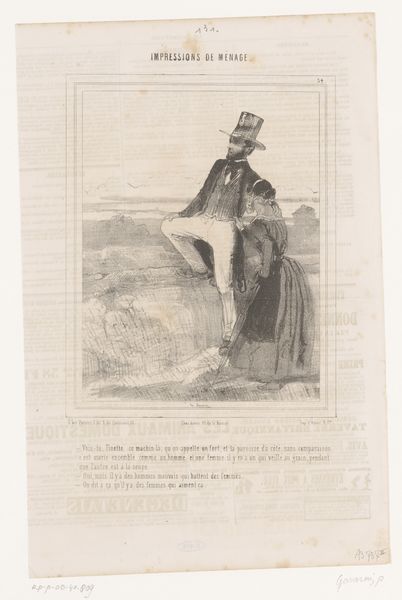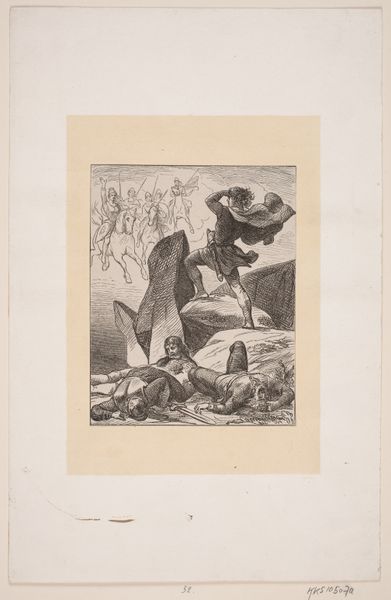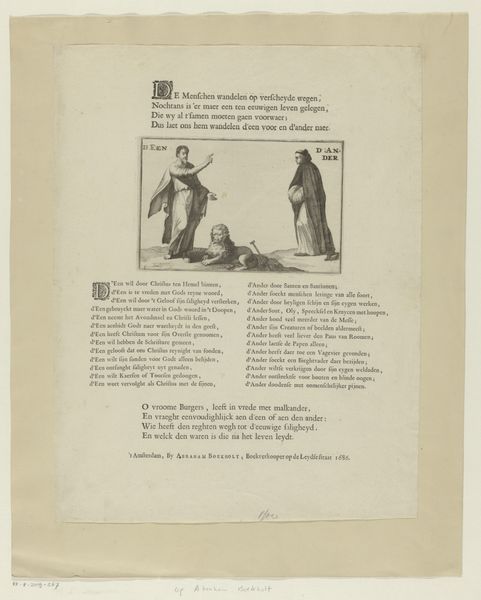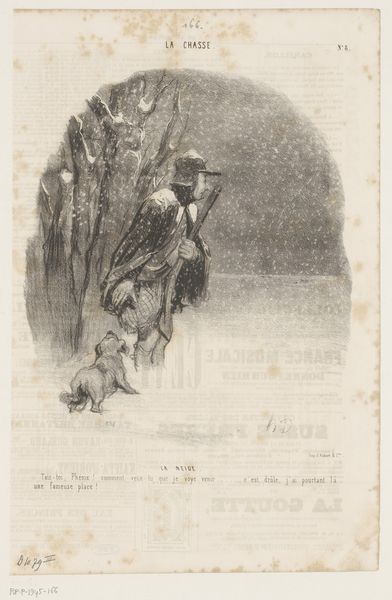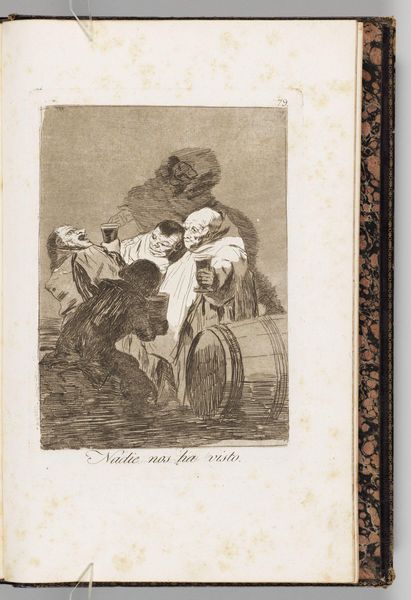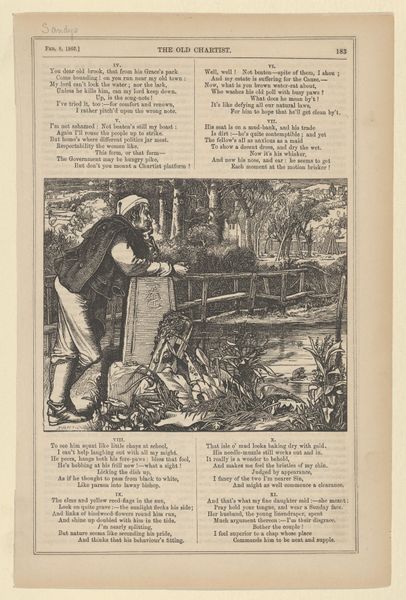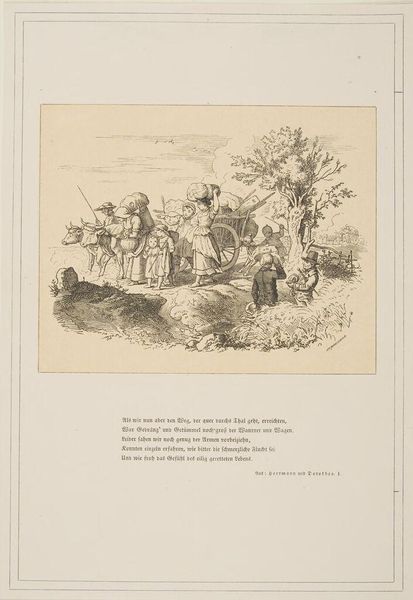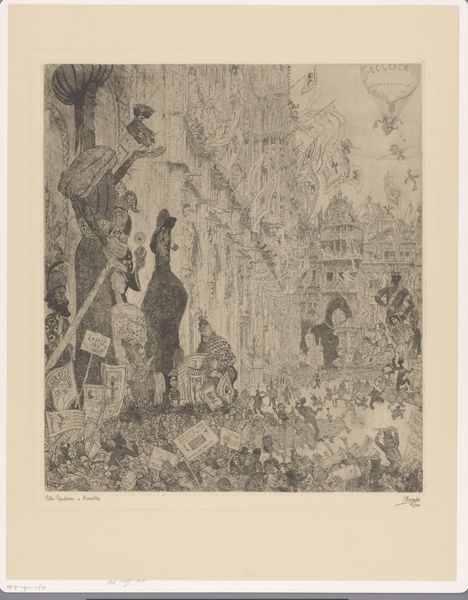
Dimensions: height 367 mm, width 266 mm
Copyright: Rijks Museum: Open Domain
Curator: The work before us is entitled "De herder en de zee" created sometime between 1876 and 1890 by Firmin Bouisset. This lithograph seems to pull in elements of Ukiyo-e. Editor: It’s lovely. The print work is just, it feels very calm at first glance. There's something nostalgic about the pastel tones that brings an intimacy with it. It has the sort of light one would expect on a hazy afternoon. Curator: It’s intriguing, the composition divides itself rather distinctly between the near and far. We have a shepherd and his dog gazing towards ships out on the water. Then to the upper right a separate illustration showing the same shepherd in a verdant, seemingly infinite landscape dotted with what appear to be sheep, all bisected with the text of the poem by La Fontaine. I wonder how you read those symbols in relation to each other? Editor: Well, what strikes me is the interplay between these images, one representing freedom and exploration, represented by ships on a horizon, with the infinite horizon of sheep as commodity. How that tension defines the life of someone so rural is immediately brought up by this division in illustrations. Curator: Exactly. In its way, this reflects the growing divide between the romanticized rural idyll and the realities of commerce and agricultural shifts occurring at the end of the 19th century. Bouisset creates, by mirroring a real life image alongside a classical work, an uneasy comparison. Editor: Absolutely. The romanticized rural life becomes commodified in the same way the promise of a distant horizon is made real with the very real dangers of sea travel. One horizon is immediate and tangible, while the other is distant and mediated by the presence of ships which, despite being for trade and wealth, have their fair share of potential pitfalls. Curator: This print also serves as an interesting example of how classical tales like those of La Fontaine continued to be reimagined and reinterpreted for changing audiences. This work uses its medium in such a fascinating way. Editor: Indeed. This print definitely encourages you to consider the symbols it employs as you observe. The juxtaposition of hope with hard labor. There is a depth and social history communicated economically by a composition in two distinct halves.
Comments
No comments
Be the first to comment and join the conversation on the ultimate creative platform.
